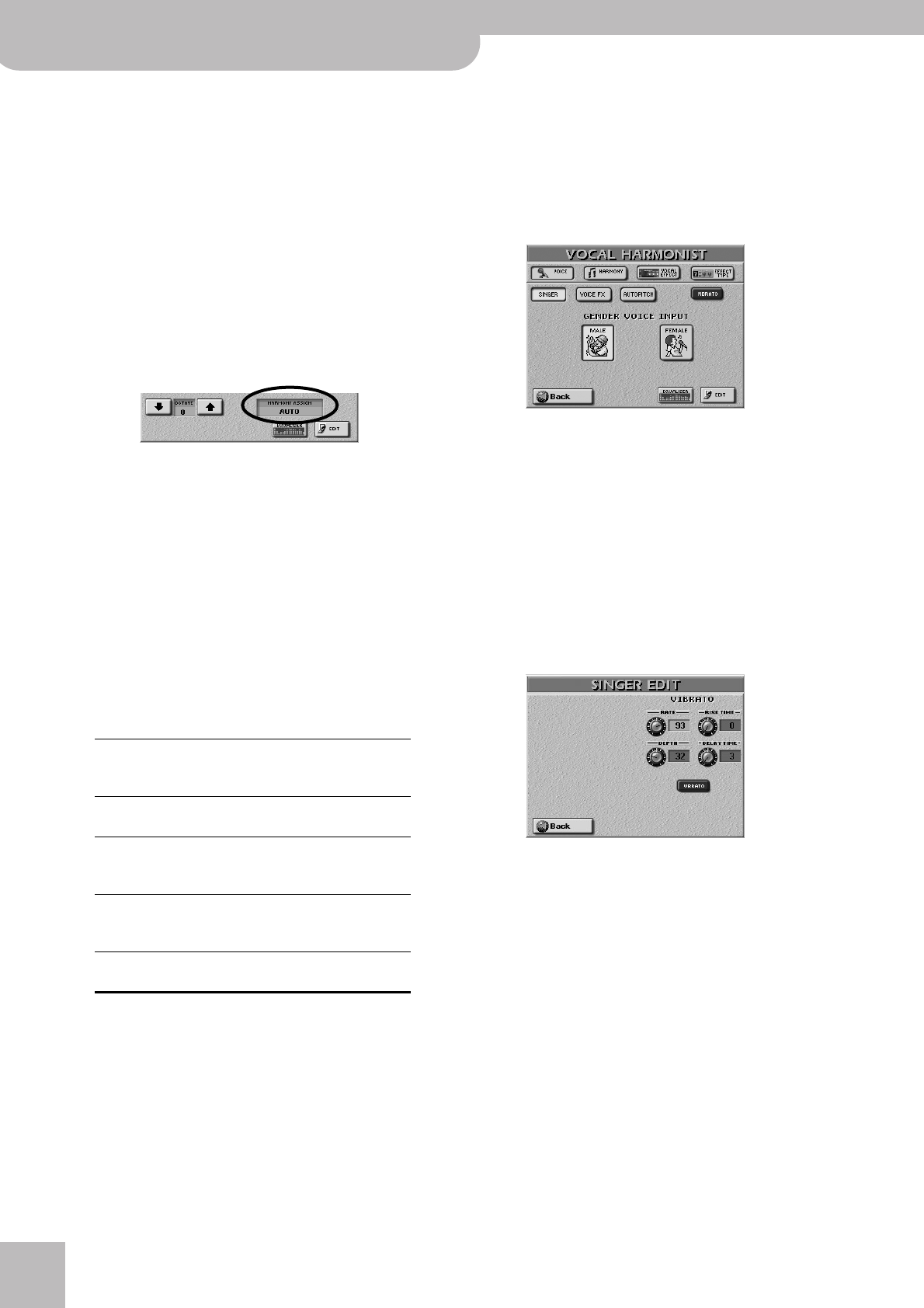
Quick Start
48
r
E-80 Music Workstation
You already know what the [MALE], [FEMALE] and
[MIX] fields are for. The 10 preset fields in the middle
allow you to select different “voicings” and voice
characters for your choir.
(9) To sing again without automatic harmonies, press
the [SMALL] or [ENSEMBLE] button again (so that
neither of them lights).
Note: Obviously, you do not have to use a song as backing:
you can also play the accompaniment yourself or use the
Arranger. See page 28 and below.
Who specifies the harmonies?
Now that you know what the Vocal Harmonist does, let
us briefly look at how it does that. You may have
noticed the [HARMONY¥ASSIGN] field in the lower left
corner of the above display pages.
Its current (default) setting is “AUTO”. This means
that, during song or Arranger playback, the note
information contained in the song data (or played in
the chord recognition area of the keyboard) will be
used for specifying the pitches of the harmony notes
(“Auto Harmony”).
Note: If the song you are playing back contains a “Harmony
track”, the harmonies will be based on those notes. In all other
cases, the harmonies are generated in realtime.
If you stop song playback and play chords on the
keyboard, the note information thus generated is
used for the harmony pitches.
Use the [DATA÷ENTRY] dial to select another setting.
The possibilities are:
Not convinced so far?
Just in case you are a little bit disappointed by the Vocal
Harmonist function, here are some tips (and a bonus):
●
Use it with song backing
The Harmonist sounds most convincing when used
during song playback. Please bear in mind that trans-
forming your voice in realtime requires quite a few
calculations and that the human voice is one of the
most difficult “signal sources” to recreate with vary-
ing pitches. The Vocal Harmonist was fine-tuned to
blend in with Standard MIDI File playback and that’s
when it sounds most “real”. Try it out, it works!
■Check the following (Gender Voice Input)
(1) Press and hold the [SINGER] button (or press the
[VOICE] field in the display).
The display changes to:
(2) Press the [MALE] field if you’re a man or the
[FEMALE] field if you’re a woman.
This is an important clue for the Vocal Harmonist.
After selecting the correct setting, you may find that
the harmonies sound better.
And just in case, you wanted to sound like a some-
what worn-out opera singer…
(3) Press the [VIBRATO] field (indicator icon must
“light”).
Sing a few notes and note the vibrato. If the effect is
not strong enough…
(4) Press the [EDIT] field.
(5) Use the DATA ENTRY [√][®][ß][†] buttons to select
the parameter you wish to edit (or press its field)
and set the desired value with the [DATA÷ENTRY]
dial.
The [VIBRATO] button icon must be blue for the
effect to be noticeable.
Here’s what the parameters mean:
RATE: Sets the speed of the vibrato effect.
DEPTH: Allows you to set the vibrato intensity.
Vibrato is an effect that changes (“modulates”) the
pitch. The higher the DEPTH value, the more outspo-
ken these periodic pitch changes will be.
RISE TIME: Allows you to set a swell for the vibrato
effect. This parameter specifies how long it takes
before the DEPTH value is reached – once the Delay
Time is up.
Auto The E-80 uses one of the following systems
(depending on what note information is avail-
able).
Keyboard
(All)
Only notes played on the keyboard will be
used for specifying harmony pitches.
Keyboard
Left
Only notes played to the left of the split point
(page 65) will be used for specifying harmony
pitches.
Keyboard
Right
Only notes played to the right of the split
point (page 65) will be used for specifying
harmony pitches.
Song The note information contained in the song
you are playing back is used.
